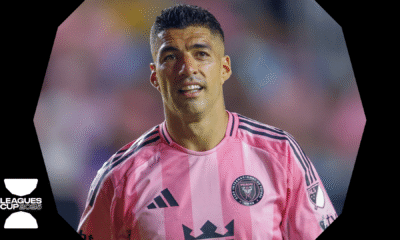PSG’s Tactical Masterclass: Exposing Real Madrid’s Fragile Diamond
Real Madrid’s recent Club World Cup semi-final defeat to PSG was more than just a loss; it was a tactical masterclass delivered by Luis Enrique’s side, ruthlessly exposing the vulnerabilities within Xabi Alonso’s 4-4-2 diamond formation. This wasn’t just a case of individual brilliance; PSG systematically dismantled Real Madrid’s strategy, highlighting weaknesses that Alonso will need to address urgently.
The Diamond’s Demise: Real Madrid’s Tactical Flaws
Xabi Alonso’s ambitious 4-4-2 diamond, while possessing inherent attacking potential, proved surprisingly brittle against PSG’s relentless pressing and intelligent positional play. The key issue seemed to be Real Madrid’s passive pressing strategy. Instead of aggressively disrupting PSG’s build-up play, they allowed too much time and space, particularly in midfield. This allowed PSG to dictate the tempo and patiently build attacks, bypassing Real Madrid’s midfield diamond with relative ease.
Further compounding the problem was the lack of sufficient protection for the defense. The diamond’s central structure, while offering creativity, left gaps in midfield, susceptible to PSG’s quick transitions and penetrating passes. The wide areas, often left exposed due to the central focus of the midfield diamond, became a consistent source of danger for Real Madrid. PSG expertly exploited these openings, creating overloads in wide positions and delivering dangerous crosses into the box.
PSG’s Precision: A Tactical Symphony
In stark contrast to Real Madrid’s passive approach, PSG’s tactical execution was a thing of beauty. Their intense pressing forced Real Madrid into hurried passes and errors, disrupting their rhythm and creating turnovers. This pressing wasn’t just mindless aggression; it was intelligently coordinated, forcing Real Madrid into predictable passing lanes and creating opportunities to win possession in dangerous areas.
The positional rotations employed by PSG were equally impressive. Players seamlessly moved into space, creating passing triangles and maintaining numerical superiority in key areas of the pitch. This fluidity made it incredibly difficult for Real Madrid to track their movements and effectively defend. Coupled with their exceptional speed in transition, PSG frequently caught Real Madrid out of position, capitalizing on the gaps created by the diamond formation’s inherent vulnerabilities.
Lessons Learned and Future Prospects
The PSG vs. Real Madrid semi-final highlighted a critical lesson for Xabi Alonso: the 4-4-2 diamond, while attractive on paper, needs adjustments to effectively combat high-pressing, strategically mobile opponents. A more aggressive pressing strategy is crucial, perhaps incorporating a higher defensive line to compress space and disrupt PSG’s build-up earlier. Furthermore, addressing the midfield’s defensive fragility is paramount, possibly through tactical adjustments or personnel changes.
The Club World Cup final promises to be a fascinating encounter. While PSG showcased their tactical prowess against Real Madrid, Chelsea presents a different challenge entirely. The winner will depend on both team’s ability to adapt and exploit tactical weaknesses. Who will prevail? Let the debate begin! Share your predictions in the comments below.
**(Remember to include the call to action links from the YouTube description in your blog post as well, appropriately placed throughout the text or at the end.)**












![[VDO] What evidence does Thailand have to claim Tamoan Thom Temple as its own? 26 What evidence does Thailand have to claim Tamoan Thom Temple as its own](https://hothotnews.com/wp-content/uploads/2025/06/What-evidence-does-Thailand-have-to-claim-Tamoan-Thom-Temple-as-its-own-e1751463052220.jpg)


